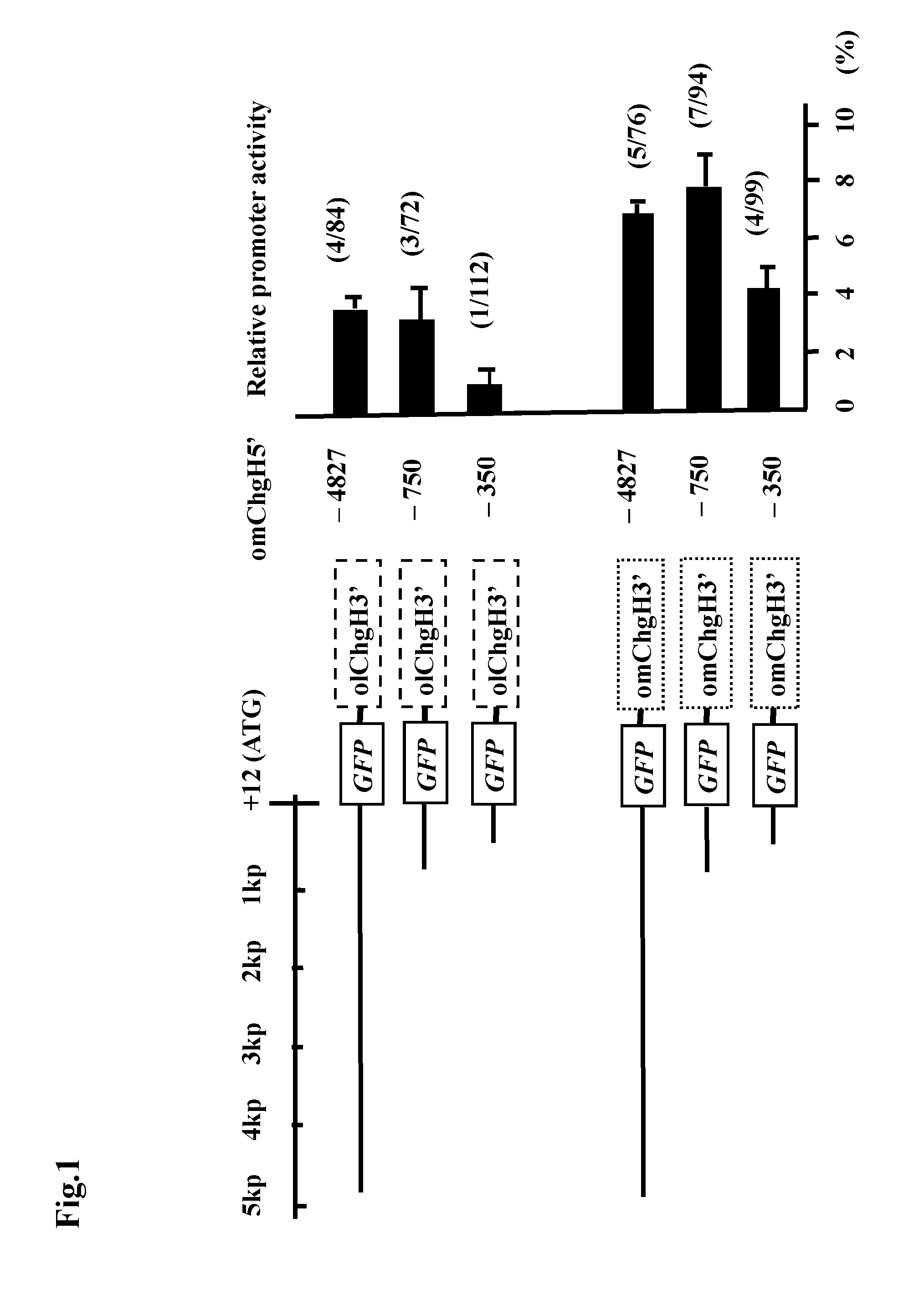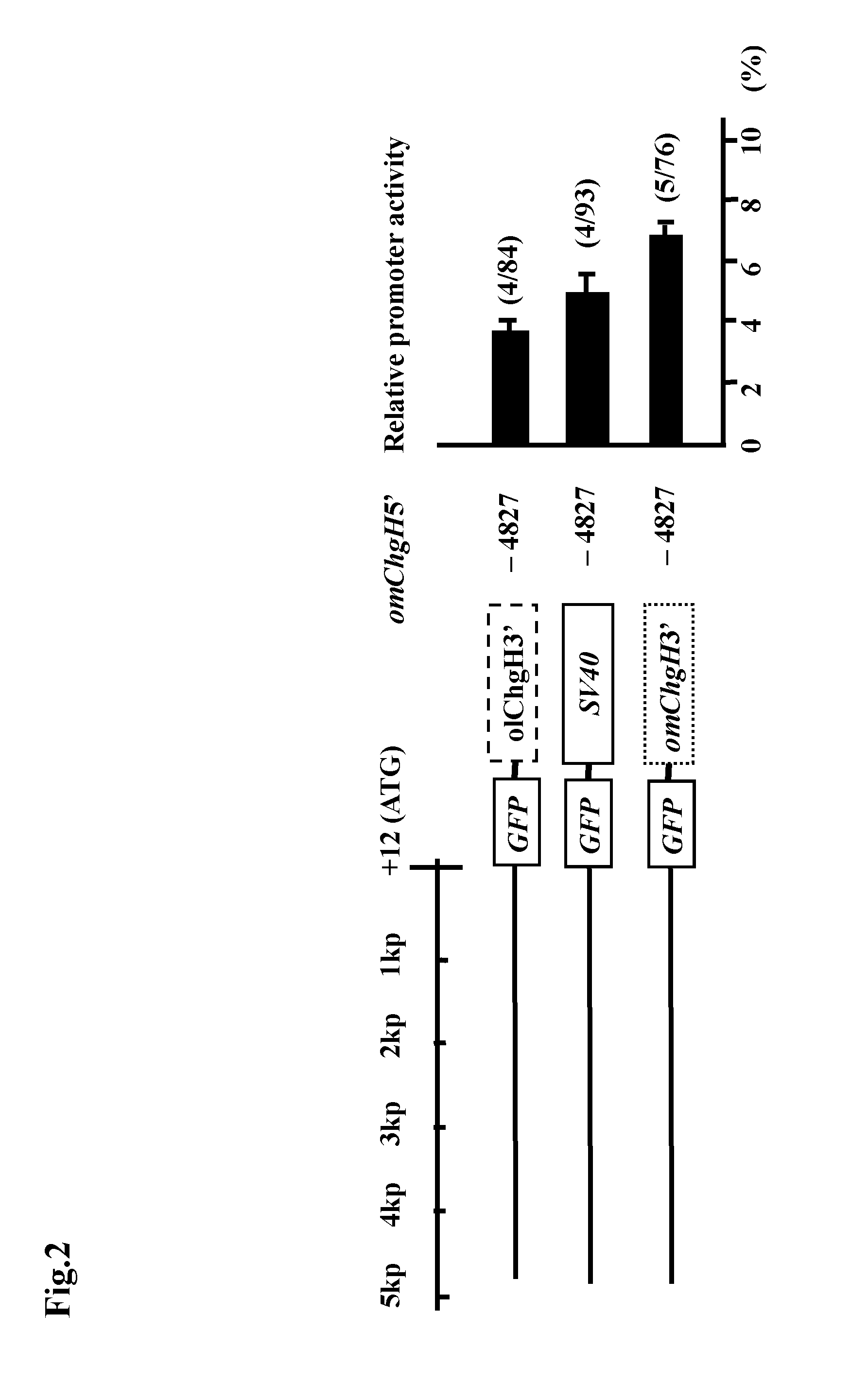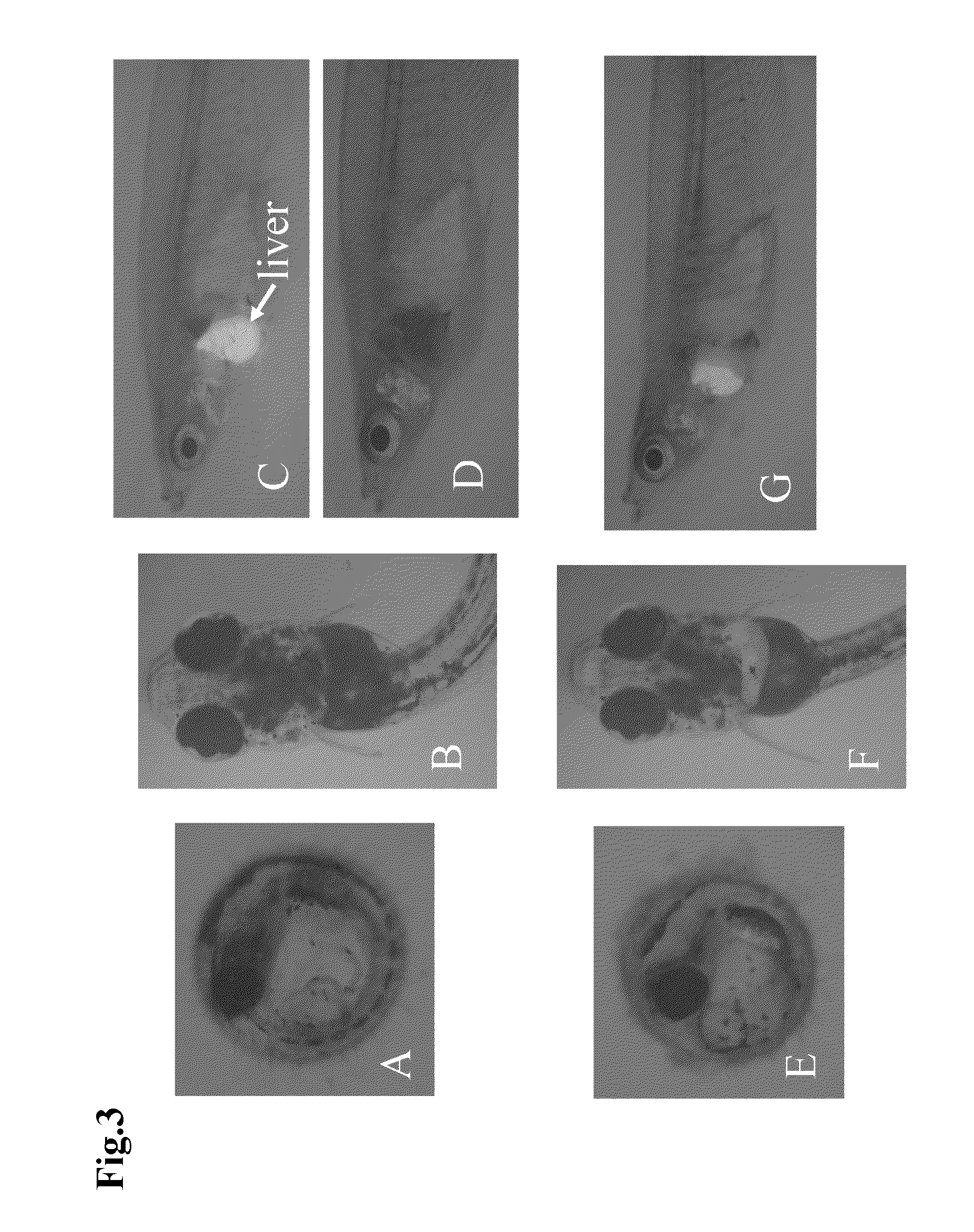Transgenic fish and uses thereof
a technology of transgenic fish and fish, applied in the field of transgenic fish, can solve the problems of inability to provide information on the toxicodynamic and toxicokinetic effects of test substances on organisms, and current transgenic fish assays are limited
- Summary
- Abstract
- Description
- Claims
- Application Information
AI Technical Summary
Benefits of technology
Problems solved by technology
Method used
Image
Examples
example 1
Development of a Transgenic Fish
Preparation of Brackish Medaka Genomic DNA
[0139]Genomic DNA (represented as gDNA) was extracted from an adult female with intestine dissected out. The sample was pestled in liquid nitrogen to small particles and incubated with 10 ml DNA extraction solution (150 mM NaCl, 0.5% sodium dodecyl sulfate (SDS), 25 mM ethylenediaminetetraacetic acid (EDTA), 10 mM Tris-HCl, pH 8.0) and 1% proteinase K at 45° C. for more than 4 h. Same volume phenol was added to the solution and mixed by slow rotation for 0.5 h. After 2,000 rpm centrifugation for 10 min, aqueous phase containing gDNA was transferred to a new polytron tube (50 ml) and mixed with the same volume of phenol / chloroform on a rotor for 10 min. Solution was then centrifuged at 2,000 rpm for 10 min, and aqueous phase was transferred to a new tube. gDNA solution was further purified by same volume of chloroform followed by 5 min centrifugation at 2,000 rpm. Aqueous phase was transferred to a new tube and...
example 2
[0154]A generalized exposure regimen is established in the present art. FIG. 4 presents an example of using transgenic fish larvae to analyze the estrogen-like activity of a test solution. Exposure of transgenic brackish medaka fish (preferably yolk-sac larvae fish) to test solution (containing estrogen or estrogenic substances) is performed at 28° C. The exposure usually takes 24-48 hours. After exposure, the fish will be deposited on the inner side of a petri-dish cover with a small drop of test solution left. The induced EGFP expression in the fish liver will be observed under fluorescence microscope. Yolk-sac larvae are small, exposure can be carried out in utensils like 96-well plate, 24-well plate, petri-dish and so on to save test reagents. Additionally, newly hatched larvae are the most transparent stage, and the transparence can keep up to 15 days after hatch. After 15 days, the larvae will be gradually less transparent due to the development of...
example 3
Estrogen-Like Activity Analysis
Natural Estrogens
[0157]Estrone (E1), 17β-estradiol (E2) and estriol (E3) are natural steroid estrogens. All the three estrogens can induce liver GFP expression in transgenic brackish medaka larvae of present invention at nM level. Of them, E2 has been intensively studied, and is commonly used as a standard estrogen to evaluate the estrogen-like activity of testing reagents. Using transgenic larvae of present invention, induced GFP signal by E2 can usually be observed within 24 hours, and the GFP signal increases with the increasing concentration of E2. At higher E2 concentrations (e.g., 102 or 1020 nM), induced GFP signal intensity can even be observed within 4 hours after onset of exposure, and the signal increases with exposure time (FIG. 8), and reaches saturation within 24 hours. At low E2 concentrations, however, it will take longer for the induced GFP signal to accumulate to become detectable. Thus, by exposing transgenic brackish medaka fish lar...
PUM
| Property | Measurement | Unit |
|---|---|---|
| size | aaaaa | aaaaa |
| volume | aaaaa | aaaaa |
| volume | aaaaa | aaaaa |
Abstract
Description
Claims
Application Information
 Login to View More
Login to View More - R&D
- Intellectual Property
- Life Sciences
- Materials
- Tech Scout
- Unparalleled Data Quality
- Higher Quality Content
- 60% Fewer Hallucinations
Browse by: Latest US Patents, China's latest patents, Technical Efficacy Thesaurus, Application Domain, Technology Topic, Popular Technical Reports.
© 2025 PatSnap. All rights reserved.Legal|Privacy policy|Modern Slavery Act Transparency Statement|Sitemap|About US| Contact US: help@patsnap.com



